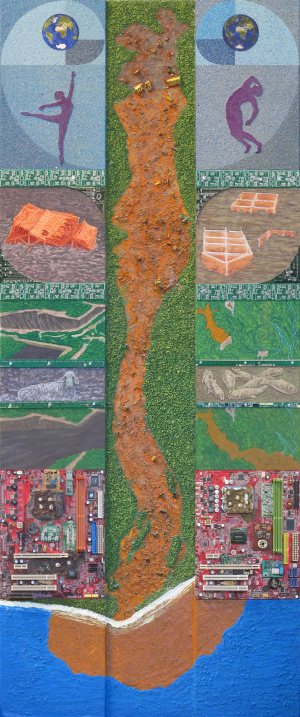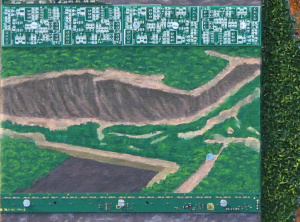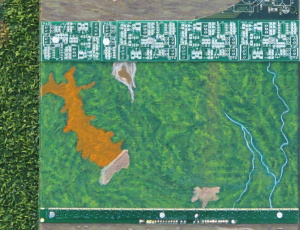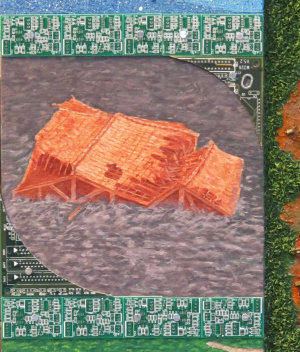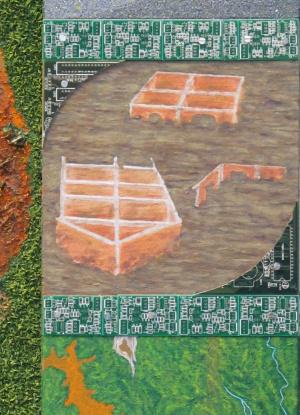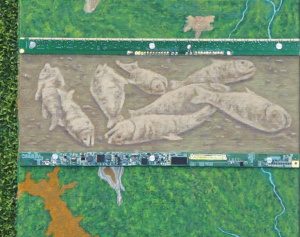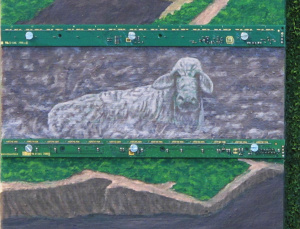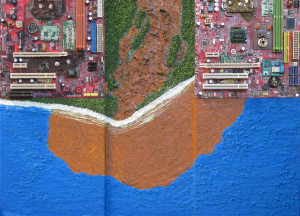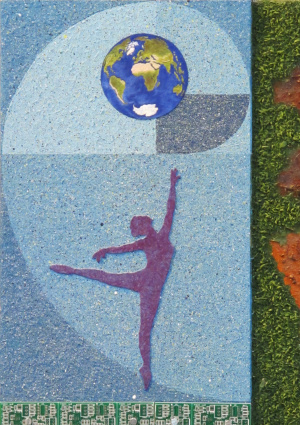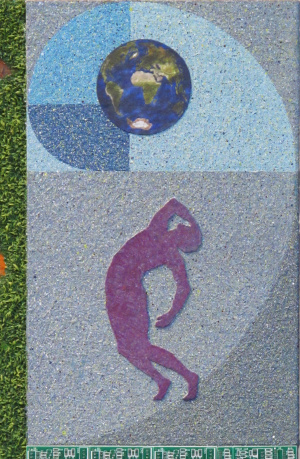From the series “Human Dichotomies” - Maribruma
Technique: Oil + sand + objects * on canvas on wood
Dimensions: 136 cm X 56.8 cm
Year: 2020
* Objects used: Computer boards sawed and ground, debris from electronic components, sharpened pencil shells, glass domes, etc.
The series “Human Dichotomies” belongs to a pictorial proposal in which I approach the human potential to make beautiful or destructive things depending on the impetus, philosophical, social, financial, religious, etc. I used three recent examples that impressed me to paint two pictures that represent the capacity for overcoming obstacles and human indifference. The first work presents the notorious rescue of Chilean miners. The second work deals with the consequences of two ecological disasters caused in Brazil, in the space of four years, by the negligence of a single company.
On November 5, 2015, the city of Mariana was surprised by the rupture of a dam called Fundão and managed by Samarco Mineração and controlled by the mining companies Vale SA and BHP Billiton. The mud formed by mining tailings flooded the subdistricts of Bento Rodrigues and Paracatu de Baixo, which were almost completely destroyed, and killed 19 residents. Subsequently, the flood of mud reached several towns and districts in the Gualaxo river valley and polluted the waters of the Doce river, which passes through more than 200 municipalities in Minas Gerais and Espirito Santo before flowing into the sea. Many municipalities had their water supply impaired due to their dependence on the Doce River.
One of the results of this catastrophe on the river was the extinction of several species of fish and the environmental degradation that will last for several decades, with the land becoming unproductive and several animals disappearing from the region due to the conditions of the Doce River.
On November 22, 2015, the mud reached the sea, making the region's beaches unsuitable for swimming and affecting an important local biological reserve and thousands of species of marine fauna and flora.
On January 25, 2019, another dam controlled by Vale SA called Mina do Córrego do Feijão, in the city of Brumadinho, also collapsed, killing 270 people, including workers, residents and tourists. The collapse of the dam spilled a thick mud that reached local villages, closed roads, knocked down pillars of a bridge and reached and contaminated the Paraopeba river, which supplies more than fifty cities. The mud also destroyed part of the Atlantic Forest and killed several domestic and wild animals. This is considered the biggest environmental disaster in the country and the biggest accident at work.
In addition to these problems, the cities that were affected by the two ruptures had their economic activities impaired, a fact that caused unemployment and closure of activities, in addition to reducing the quality of life of local populations.
Thus, this second work represents my revolt with the neglect of mining companies towards human life, fauna and flora. It addresses some representative situations of these two environmental disasters. The center of the frame represents the route of the tailings going to the sea, at the bottom. In the upper part, two dancers represent human arrogance and despair in the face of their actions against nature. The left lane represents situations related to the destruction caused in the Brumadinho region and the right lane represents situations caused by the dam in the Mariana region.
The title of this painting is formed by joining the names of the cities of Mariana and Brumadinho (Mari+Bruma).
